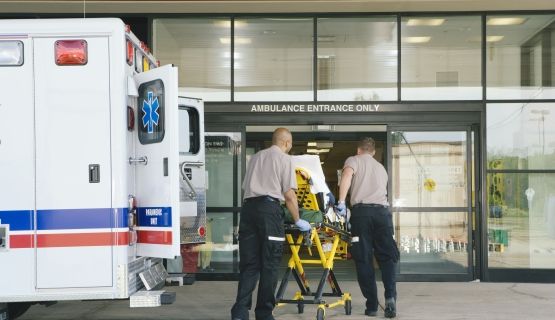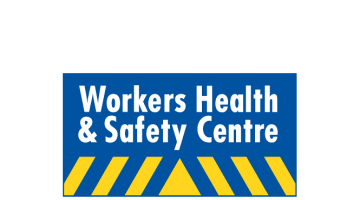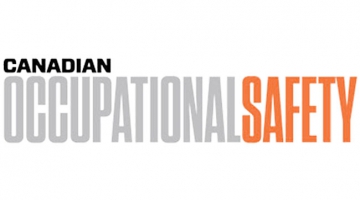Construction sector
IWH research that specifically involves construction workplaces, workers, unions, employers and/or associations, as well as research on programs that specifically target the construction sector, is collected together here. Not included is IWH research that cuts across all or many sectors, even though it may be relevant to the construction sector. For this reason, visitors are encouraged to explore beyond this page to find equally important information on the prevention of work injury and disability in construction.
Featured

Research Highlights
In which occupations are Ontario workers who had a work-related injury most at risk of opioid-related harms?
Formerly injured workers in certain occupations in Ontario are at an elevated risk of experiencing opioid-related harms, according to a study by IWH and the Occupational Cancer Research Centre.
Published: October 17, 2024

Research Highlights
Workers who had a work-related injury have higher risk of opioid-related harms than the general population in Ontario
An IWH study found that workers who had a work-related injury had higher risks of emergency department visits and hospitalizations for opioid-related harms than the general Ontario population. This pattern was seen across most occupation and industry groups,
Published: April 25, 2024
News release
News release
Worker injuries due to falls from heights declined after Ontario made training standardized and mandatory, study finds
Published: November 2023

IWH in the media
Standardized working at heights training improves safety, study
A follow-up study looking at the impact of Ontario’s mandated working at heights training confirms standardized training results in safer work.
Published: Workers Health & Safety Centre, January 2023
IWH Speaker Series
IWH Speaker Series
Preventing falls from heights in construction: a long-term evaluation of Ontario's working-at-heights training standard
In 2015, the province of Ontario implemented a working-at-heights (WAH) training standard requiring most construction workers to take a specific day-long training in fall prevention. A 2019 study conducted by the Institute for Work & Health found the training had positive impact on construction workers' safety knowledge, work practices and injury rates. In this presentation, Dr. Lynda Robson shares new findings on the longer-term impact of the training, drawing on two additional years of follow-up data.
Published: December 2022
Journal article
Journal article
Evaluating effectiveness of an integrated return-to-work and vocational rehabilitation program on work disability duration in the construction sector
Published: Scandinavian Journal of Work, Environment & Health, April 2022

IWH in the media
Inquest witness pressed on Working at Heights training outcomes
Testimony from a senior Ministry of Labour, Training and Skills Development (MOL) policy manager on day three of Ontario’s swing stage inquest Feb. 2 revealed the ministry may be recommending changes to Working at Heights (WAH) training as soon as April. Don Wall reports.
Published: Daily Commercial News, February 2022

IWH in the media
Ontario ministry could recommend changes to working-at-heights training
A testimony from William Roy, a senior Ministry of Labour, Training and Skills Development (MOL) policy manager, revealed potential changes to working at heights (WAH) training which could be implemented as soon as April.
The revelation came on day three on Ontario’s swing stage inquest into the 2009 scaffolding collapse at an Etobicoke high rise, in which four people died. Roy's testimony included suggestions for training reforms, contained in a Feb. 2019 report conducted by the Institute for Work & Health (IWH) and commissioned by the Ministry.
The revelation came on day three on Ontario’s swing stage inquest into the 2009 scaffolding collapse at an Etobicoke high rise, in which four people died. Roy's testimony included suggestions for training reforms, contained in a Feb. 2019 report conducted by the Institute for Work & Health (IWH) and commissioned by the Ministry.
Published: Canadian Occupational Safety , February 2022
Journal article
Journal article
Return-to-work after work-related injury in the construction sector: a scoping review
Published: Journal of Occupational Rehabilitation, February 2022
Journal article
Journal article
Unionisation and injury risk in construction: a replication study
Published: Occupational & Environmental Medicine, January 2022
Journal article
Journal article
Break-even analysis of Respirable Crystalline Silica (RCS) exposure interventions in the construction sector
Published: Journal of Occupational & Environmental Medicine, November 2021

IWH in the media
Work-related skin cancer among construction workers set to double by 2060
Cases of work-related non-melanoma skin cancer among construction workers in Ontario are on track to double by 2060. However, according to new research done by the Institute for Work & Health (IWH), if protective equipment and clothing such as long-sleeve shirts, pants and neck coverings are worn by construction workers, up to 6,034 cases of such cancers could be averted over the next three decades. That would result in $38 million in costs (in 2017 Canadian dollars) being saved over a 30-year period, Grant Cameron reports.
Published: Daily Commercial News, July 2021